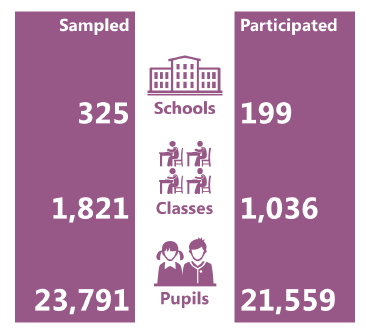Scottish Schools Adolescent Lifestyle and Substance Use Survey (SALSUS): mental wellbeing report 2018
Mental health and wellbeing findings from the 2018 wave of the Scottish Schools Adolescent Lifestyle and Substance Use Survey (SALSUS).
Executive Summary
Introduction
This report presents the mental health and wellbeing findings from the 2018 wave of the Scottish Schools Adolescent Lifestyle and Substance Use Survey (SALSUS). The research was commissioned by the Scottish Government and carried out by Ipsos MORI Scotland.
Survey background and purpose
SALSUS is a continuation of a long established series of national surveys on smoking, drinking and drug use. These were carried out jointly in Scotland and England between 1982 and 2000, to provide a national picture of young peoples' behaviours regarding smoking (from 1982), drinking (from 1990) and drug use (from 1998) within the context of other lifestyle, health and social factors. Since 2002, Scotland has developed its own, more tailored survey, known as SALSUS. In recent years, SALSUS has also become one of the main sources of mental health data among young people in Scotland with data collected from 2006 onwards.
About the survey
SALSUS is a self-completion survey administered by teachers in a mixed ability class, under exam conditions. In 2018, schools were encouraged to administer the survey online (but could administer it on paper if that was more feasible). Fieldwork was undertaken between September 2018 and April 2019. For full details of the methodology please see the accompanying SALSUS 2018 Technical Report.

An infographic showing the sampling and participation numbers for the 2018 SALSUS survey. The figure shows that 325 schools were sampled and 199 schools participated, that 1,821 classes were sampled and 1,036 classes participated, and that 23,791 pupils and 21,559 pupils participated.
The overall response rate was 52% based on class and pupil response rate[1].
Key findings
Emotional and behavioural problems and mental wellbeing
- In 2018, 63% of pupils had a normal overall score on the Strengths and Difficulties Questionnaire (SDQ), 18% had a borderline score and 20% had an abnormal score.
- Since 2010, the proportion of pupils with borderline or abnormal SDQ scores has continually risen, while the proportion of pupils with normal scores has fallen.
- 15 year old girls continue to have the highest rate of borderline or abnormal SDQ scores, a trend since 2010, although this gap has narrowed since the last wave.
- The average mental wellbeing (WEMWBS) score for all pupils decreased between 2015 and 2018 from 48.4 to 46.9. This suggests that there has been a general negative shift in mental wellbeing since the last survey.
- The greatest changes in WEMWBS scores have been a decrease in wellbeing among 13 year old girls and 15 year old boys. However, 15 year old girls continue to have the lowest wellbeing score, as they have since 2010.
Equalities
- There was a clear link between deprivation and emotional and behavioural problems. Pupils who lived in the least deprived areas were less likely than those in the most deprived areas to have a borderline or abnormal SDQ score.
- Similarly, WEMWBS mean scores (indicating better mental wellbeing) increased as deprivation decreased, with the exception of 15 year old boys, whose scores showed no consistent pattern across deprivation levels.
- Pupils who reported that they had a long term illness or disability were twice as likely as those who did not to have a borderline or abnormal overall SDQ score. Those with a long term illness or disability also had lower levels of wellbeing than those who did not.
- Pupils who were young carers were considerably more likely to have a borderline or abnormal SDQ score and lower mental wellbeing than pupils without caregiving responsibilities.
Family, Friends and School
- Pupils who were unlikely to talk to their parents about something that was worrying them were more likely to have a borderline or abnormal overall SDQ score and lower mental wellbeing levels than those who were likely to talk to their parents.
- The greater the number of close friends a pupil reported, the less likely they were to have a borderline or abnormal SDQ score and the more likely they were to have higher wellbeing.
- Whether a pupil liked school was strongly associated with overall SDQ scores. Those who don't like school at all were more than three times as likely to have a borderline or abnormal SDQ score than those who like school a lot (68%, compared with 19%).
Contact
Email: salsus@gov.scot
There is a problem
Thanks for your feedback